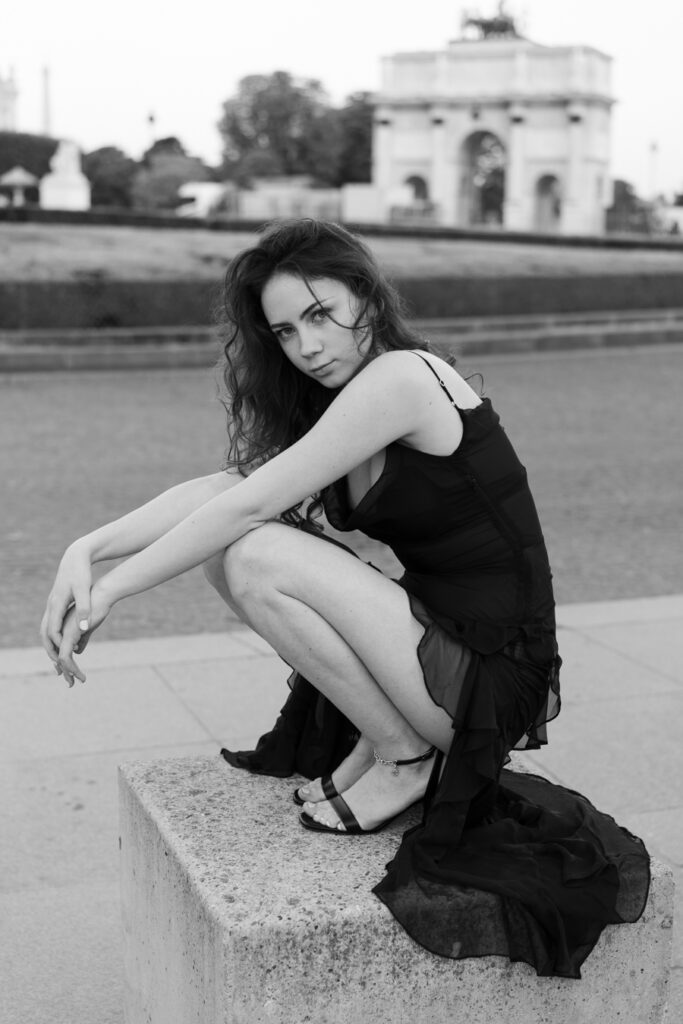
In an era where colour dominates our screens, black and white portrait photography stands as a striking, timeless alternative. Stripped of the vibrant hues we’ve grown accustomed to, black and white portraits offer a powerful way to capture the essence of a subject, showcasing the raw emotion and depth often overlooked in colour photography.
Why Black and White?
You might ask, in a world so full of colour, why choose black and white? The answer lies in its ability to distil an image down to its most essential elements. Without the distraction of colour, a black and white portrait accentuates texture, contrast, and form. It invites the viewer to focus on the subject’s expression, the play of light and shadow on their face, and the mood conveyed by the image. It’s a medium that prioritises feeling over the superficial, making it an ideal choice for those who wish to communicate something deeper through their portraits.

The Story of my own Love for B&W
First, I am a little girl and I am allowed to watch the magic happen in the dark room. My father, an excited young man, twisting and turning curious things, staring at the pictures coming to life in a tray of developer…
Later, I am a teenager, snapping away with my own camera. I have no idea that auto mode even exists.
I think it works similarly, like the love for foods you ate when you were little. They are the tastiest ever.

The pros of Monochrome Portrait Photography
There are several reasons why people might opt for a black and white photo shoot. First and foremost, it has an unmatched ability to evoke emotion. The absence of colour allows the viewer to concentrate on the subject’s expression, the subtleties in their eyes, or the lines etched on their face, each telling a story in a way that colour might dilute.

Furthermore, black and white photography has a timeless quality. While trends in colour photography may shift, black and white portraits never go out of style. They can evoke a sense of nostalgia, transporting us to another era, or simply allow the subject’s character to shine through in a way that feels both classic and enduring.

Black and white portrait photography is also forgiving when it comes to imperfections. A blemish that might stand out in a colour photo can be softened or even become a point of interest in a monochrome image. The emphasis is on the overall composition and the interplay between light and shadow, rather than the specific details of skin tone or the vibrancy of clothing.


The images of well-known artists remain iconic, not just because of their technical skill, but because black and white allowed them to convey a certain mood, atmosphere, or narrative that might have been lost in colour.
Who Is B&W Portrait Photography For?
Monochrome portrait photography is for those who appreciate the art of subtlety. It’s for people who are drawn to the dramatic, who want their portrait to tell a story boldly, without the distraction of colour. It’s especially popular among those looking to create classic images with depth and artistic flair. Images that will still feel relevant decades from now.
This style of photography is also well-suited for those who want to highlight certain features or emotions. Whether it’s the deep lines of age in a grandparent’s face, the innocence in a child’s eyes, or the contrast of light and shadow on a model’s skin, black and white can bring out the essence of the subject in a way that colour sometimes cannot.
For today’s clients, black and white portraits can offer something refreshingly different.
In a time when we take and share photos instantly, with little thought, a black and white portrait session is a more thoughtful, considered process. It’s about creating a piece of art rather than just another picture.
Still not Convinced?
This auto portrait I took speaks for itself.


If you’ve never experienced the magic of black and white portrait photography, now might be the perfect time.
Book a session with us and discover the timeless elegance of black and white photography.
Curious to find out more?
Just a pick in the world of Henri Cartier-Bresson’s world of B&W photography





Comments +